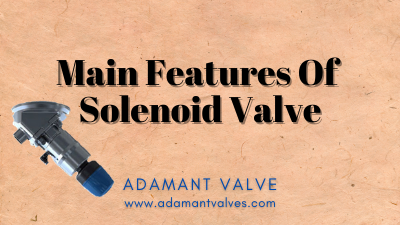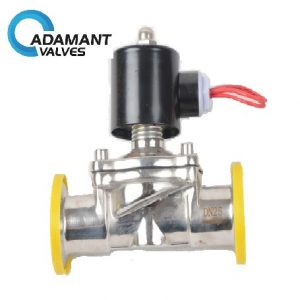The 5 Main Features Of Solenoid Valves

What is a Solenoid?
A solenoid is a coiled wire that converts electrical current into mechanical motion using electromagnetic properties. Electrical current passes through the wire, and its coiled shape helps create a magnetic field around it that can be used to move metal armature components. Solenoids are used to perform various functions in valves, inductors, antennas, cars, and more. Because they are electrically activated, solenoids are compatible with computer control systems, making them convenient for automated or remote control applications.
What is a Solenoid Valve Used For?
A solenoid valve is an automatic basic component used to control the movement of fluid through pipeline systems. The main function of solenoid valves is to adjust parameters such as flow, speed, and direction of the medium. The advantages of solenoid valves include good flexibility, multiple models, high precision, and a wide range of uses.
How Does a Solenoid Valve Work?
To manipulate the flow of liquids or gases, solenoid valves work by moving a metal plunger to open or close the valve. The plunger’s movement is induced by a magnetic field created by running an electrical current through a solenoid coil. Many solenoid valves are classified by their resting position as “normally open” or “normally closed.” For example, a normally closed valve will remain sealed when not powered on. But once electric power is applied, the magnetic force moves the plunger aside, and the liquid or gas medium can flow through the valve.
The Five Main Features Of Solenoid Valves
1. Plugged External Leakage and Controllable Internal Leakage Provide Safer Operation
Internal and external leakage can threaten the safety of your fluid or gas processing lines and the medium that flows through them. Other self-regulating valves often have stem valves that extend away from the equipment, making a potential point of damage. But solenoid valves have a rotating core controlled by electric, pneumatic, or hydraulic actuators, intended to solve the external leakage problem of valve stem dynamic sealing. Only solenoid valves use electromagnetic force to affect the steel core sealing in the magnet-isolation sleeve, and there’s no dynamic sealing, so it’s easy to block external leakage. It’s not easy to control the torque of the solenoid valve, so internal leakage is prone to happen — even the head of the valve stem can be pulled off. The solenoid valve’s structural form makes it easy to control and reduce internal leakage. Solenoid valves are exceptionally safe, and they’re suitable for mediums that are corrosive, toxic, and of high or low temperature.
2. Simple Operation with Easy Network Connectivity
The solenoid valve’s simple structure is easy to install and maintain compared to other types of actuators such as sanitary regulating valves. What is more significant is that the composition of the automatic control system is much simpler and more cost-effective. As electro-mechanic switch signals control the solenoid valve, it’s very convenient to connect it to computers. In today’s world, where computer automation is widespread, the advantages of solenoid valves are even more apparent.
3. Lightweight Responsiveness & Energy-Saving Performance
Solenoid valves have response times as short as several milliseconds. Even the pilot solenoid valve can reach a response time in the tens of milliseconds. Due to self-looping, they’re more sensitive than other self-control valves, and the coil power consumption of a well-designed solenoid valve is very low. These energy-saving products can also be configured so that only one needs to trigger an action, and the valve positions are automatically kept. Plus, solenoid valves are small and lightweight, making them easy to install and maintain.
4. Limited Regulation Accuracy & Applicable Mediums
Usually, solenoid valves only have two states — “open” and “closed.” The valve core can only be in two extreme positions, and continuous regulation is impossible. Therefore, the regulation accuracy is very restricted. Solenoid valves have a high requirement for the cleanliness of the medium. Mediums containing particles, viscous mediums, and mediums that are high in suspended solids are not compatible with solenoid valves.
5. Versatile Performance & Wide Application Range
Although solenoid valves have some inherent disadvantages, its advantages are still very prominent. Solenoid valves are designed into a variety of products to meet various needs. They have a wide range of uses in applications like medical, dentistry, industrial, automotive, and more. The technological progress of solenoid valves centers around how to overcome inherent disadvantages and how to utilize its advantages better.
Conclusion
Now that you understand the critical features of solenoid valves, we hope it will help you decide if this vital equipment is right for your fluid or gas processes. If you want to learn more about sanitary valves, we would like to advise you to visit the Adamant Valves homepage for more information





